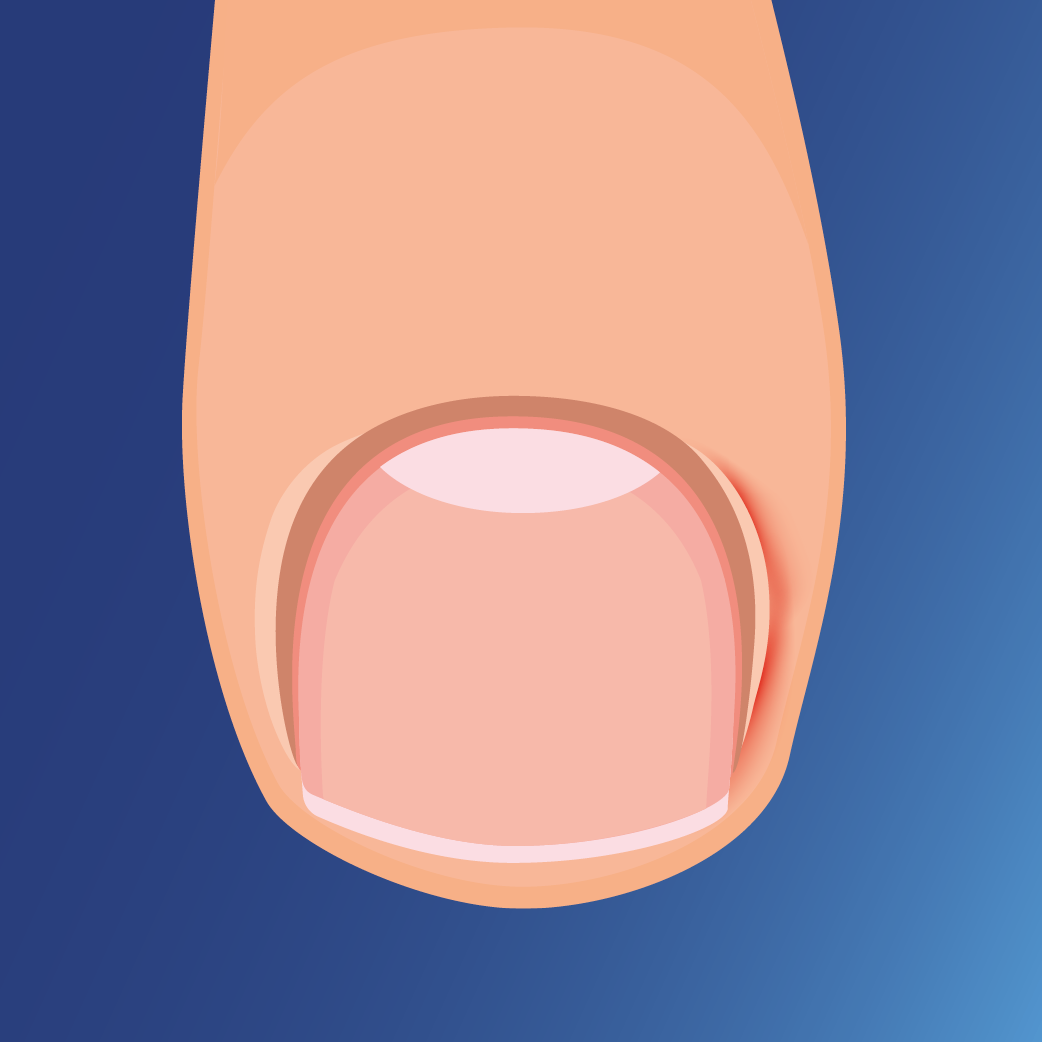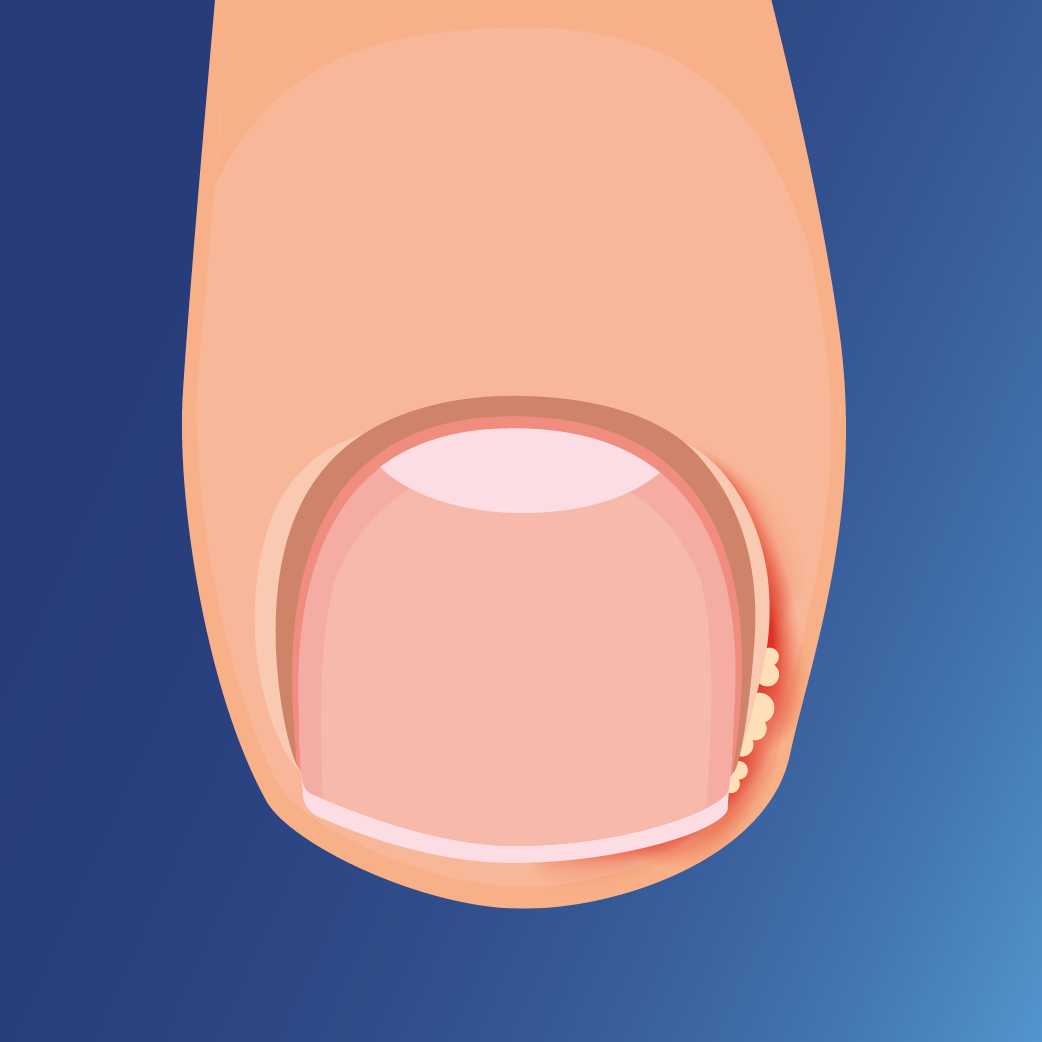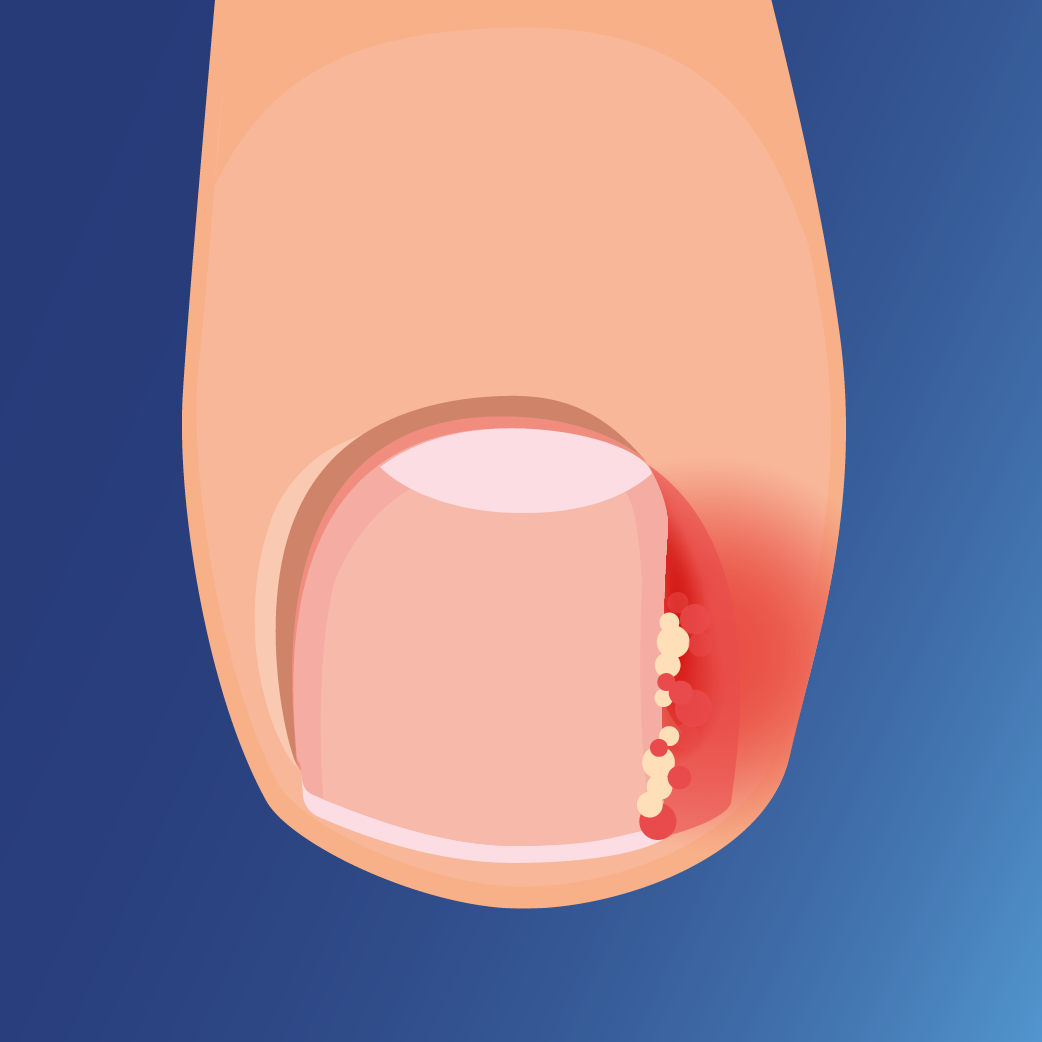Ingrown nail (Unguis incarnatus)
An ingrown nail is medically referred to as "unguis incarnatus" or "onychocryptosis". This painful problem usually occurs on the big toe. Men tend to struggle with ingrown nails slightly more often than women.
An ingrown nail occurs when the toenail grows sideways into the nail bed or the nail fold and thus deviates from its intended direction of growth. Although this may seem inconspicuous at first, the significance of this condition should not be underestimated. Treatment is often lengthy, especially for people with type 2 diabetes mellitus, who are particularly at risk due to wound healing disorders and complications. For this reason, regular foot checks by a foot professional are of crucial importance.
SYMPTOMS OF INGROWN TOENAILS
The first symptoms of an ingrown nail (Unguis incarnatus) are redness and slight swelling of the nail fold, followed by stabbing to throbbing pain or an inflammation of the nail bed.
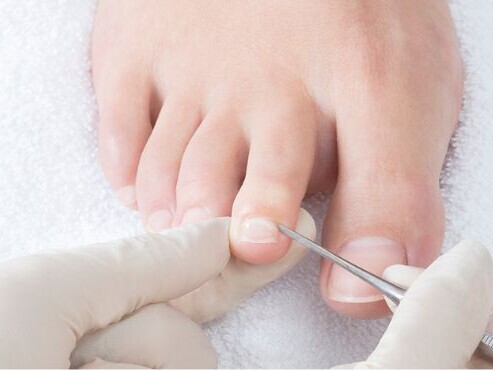
The symptoms differ depending on the stage of illness:
- Painful lateral nail fold (the indentation along the edges of the nail plate)
- Thickened lateral nail fold
- Reddened nail fold/toe
- Restricted mobility – pain while running
- Weeping tissue
- Tissue growth over the nail
- Pus formation (caused by bacteria)
CAUSES OF INGROWN TOENAILS
One of the most frequent causes of ingrown toenails is incorrect cutting. The nail is often cut in a rounded shape and the nail bed is injured in the process. Or the edge is cut down lower at the side, leaving little spurs that then grow deeper into the nail fold.
But ingrown toenails can also be the result of severe sweating and tight footwear, and they are more frequent among diabetics. And if people are unable to feel pain in their feet due to neuropathy (nerve damage), they often fail to notice pressure points, which increases the likelihood of ingrown toenails. It is therefore especially important that people with diabetes have their feet checked regularly.
External factors:
- Incorrect nail cutting
- Wearing the wrong shoes and footwear that is too tight
- Shoes that make the feet sweat severely
- Wearing compression or support stockings that are closed at the front
- Sporting activities (e.g. football, jogging, squash)
- Severe sweat production
- Uneven wear
Genetic factors:
- Toe malformations
- Foot deformities
- Bunion (hallux valgus)
- Fallen arches
- Splay foot
- Toes that cross over
- Toes that are excessively long
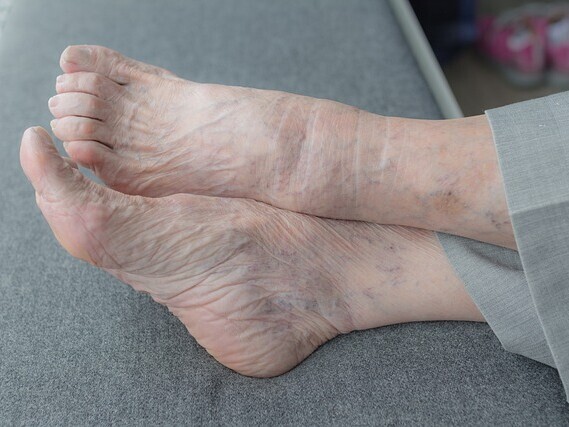
Disorders / Ageing process / Pregnancy:
- Normal ageing process, limited agility, foot care made more difficult in advanced age
- Diabetes mellitus
- Hormonal changes
- Growth disorders (e.g. involuted toenails or after nail mycosis (onychomycosis)
- Medication (chemotherapy, cytostatic drugs, hormone preparations, antiphlogistics)
- Nail fungus
- Severe sweat production (hyperhidrosis)
- Pregnancy
Treatment of an ingrown toenail
Ingrown toenails should not be observed and treated independently. Whether it concerns children, adolescents or adults, it is advisable to consult a doctor or foot professional. This will not only ensure an appropriate diagnosis, but also treatment tailored to the individual case and recommendations to prevent further complications.
Different options are available for treating an ingrown nail, depending on the stage or severity. There are conservative therapies, including nail correction systems, and surgical forms of therapy.
Whether a nail correction system should be used or whether a surgical procedure is required should always be decided together with the treating doctor and the foot professional.
ONYFIX – GENTLE NAIL CORRECTION FOR INGROWN TOENAILS
Nail correction braces were already used to treat ingrown toenails back in the 19th century. But it was not until the second half of the 20th century that the technique became more widespread.
Onyfix was launched as a medical device in 2017. The Onyfix nail correction system is an innovative product for painless treatment of ingrown and involuted nails (Unguis incarnatus). The Onyfix nail brace can treat almost all shapes and stages of ingrown, involuted and deformed nails. Onyfix is not just user-friendly, it also enables patients pain-free and non-invasive (tissue remains intact) treatment for the correction of toenails. In addition, the system can be used individually, and can be applied quickly and easily.
As Onyfix is not interlocked, this synthetic brace can also be used in the case of inflammation. It is especially suitable for diabetic patients, toddlers, and people with anxiety disorders.


